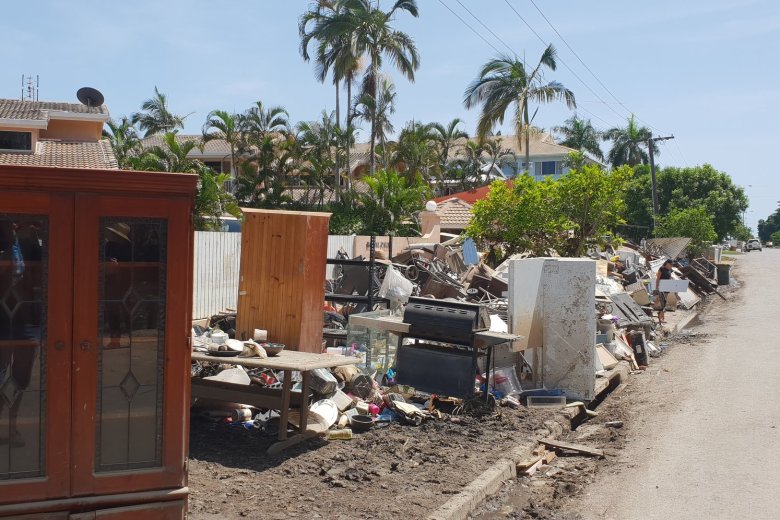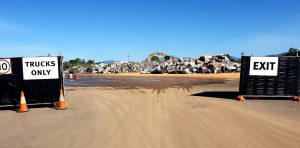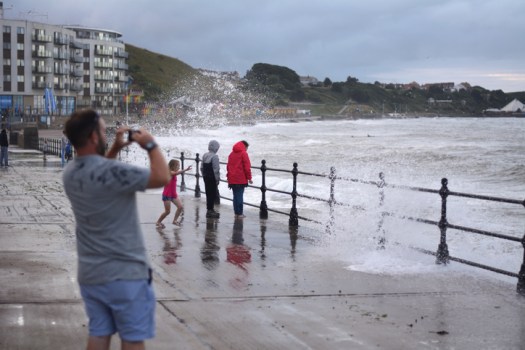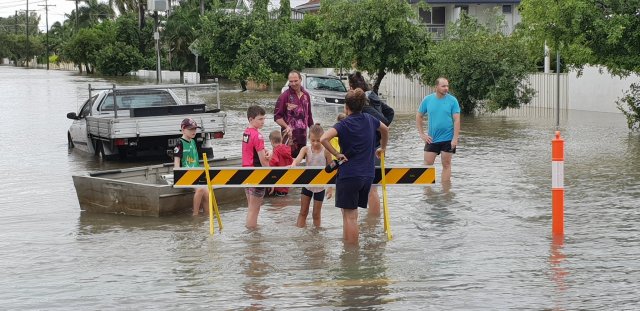
After collecting 60,000 tonnes of rubbish just weeks after northwest Queensland’s devastating floods, Townsville council is getting back on its feet.
Nearly two months after flood waters swept through the region, damaging thousands of homes, council is being praised for its clean-up efforts by the national waste recovery peak body.
Flood waters damaged more than 3,300 homes and thousands of items, from furniture to homewares, were left strewn on the streets.
But council’s mammoth waste recovery effort, collecting 60,000 tonnes of waste in just 38 days, has put the community back on its feet, with locals now pinning its hopes on a record tourism season.
Communities crippled by the floods are settling back in as farmland recovers, prompting hopes of a reset for the economy.
The state’s local government peak on Thursday said the north-east Queensland communities of Cloncurry and McKinlay Shires are hoping for a bumper tourist season as land in the regions returns to green, graziers get back on their feet and travellers hit the road.
Inside the “heroic” clean-up
The speedy recovery just months out from the disaster wouldn’t have been possible without council’s expertly coordinated clean-up efforts, a stage of disaster recovery often undervalued, Gayle Sloan, CEO of the Waste Management and Resource Recovery Association told Government News.
“Queensland is very good at these types of activities and we saw that following the Brisbane floods. There was a similar heroic effort by those involved. Queensland’s got a really strong demonstrated ability to deal with disaster waste and do really well with it,” she said.
Well coordinated clean-ups are essential to building community resilience.
“The clean-up effort is part of assisting people to feel safe and rested and helping them get back to normality quicker. It helps in letting people back into their homes and streets to resume to normal life,” she said.
With flood waters displacing thousands of pieces of damaged furniture, mattresses, homewares and personal belongings, council’s work in setting up makeshift waste processing sites to fast-track the community’s recovery paid off, allowing locals to return to their communities.

Matthew McCarthy, manager of Townsville Waste Services told the WMRA’s conference on Thursday that council initially had 100 people on the ground collecting waste alongside 12 crews and 60 pieces of collection equipment.
“The initial phase, where people’s property was coming in, we tried to [manage] as fast as we could to return a sense of normality,” he said.
Rapid transfer stations with emergency supplies like food were created to help the 18,000 people whose homes were without electricity, with two set up at the local Bunnings and another at a stadium.
Kerbside collections were also arranged in flood impacted zones, while residents were offered free dumping services at waste facilities.
Council worked with the Australian Defence Force in the initial phase of recovery where an entire brigade dedicated to waste clocked 21,000 hours in the first seven days in the worst affected areas, according to Mr McCarthy.
“It’s really important to recognise in situations like this that you can’t do everything yourself. While we tried to maintain business as usual operations as well as manage the response and recovery phase we brought in experts. Having this guidance allowed us to have oversight of overall operations and keep on track from day to day,” he said.
The town’s recovery effort is a testament to the amazing sense of “camaraderie” in the community, and their determination to come together in times of adversity, Ms Sloan said.
“The amazing waste recovery effort is part of the community resilience that exists in that area,” she said. “We don’t talk enough about the fact that waste recovery is all about community connectedness. Clean streets and the sense of safety, sense of community wellbeing that comes from those.”
Other states have a lot to learn from Queensland, according to Ms Sloan, not just in terms of the clean-up process and coordinating with key stakeholders like emergency services, but also in finding strength in times of adversity.
“Council, private operations, emergency services – these people are just really focused on getting the job done, doing it well and having a good time. They recognise the difficult and sometimes tragic situation but also just muck in. Everyone really does work together,” she said.
Comment below to have your say on this story.
If you have a news story or tip-off, get in touch at editorial@governmentnews.com.au.
Sign up to the Government News newsletter.


There’s no mention here of the volunteers. Our street of 45 homes was entirely cleared by volunteers before Council or Army got there. I know there were many other volunteer teams working across the city clearing debris and carting it to the tip. I know none of the volunteers did it for publicity but to only mention Council and the Army and other paid private operators is misleading.